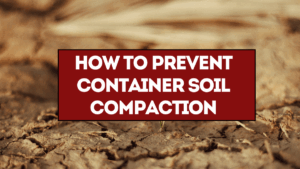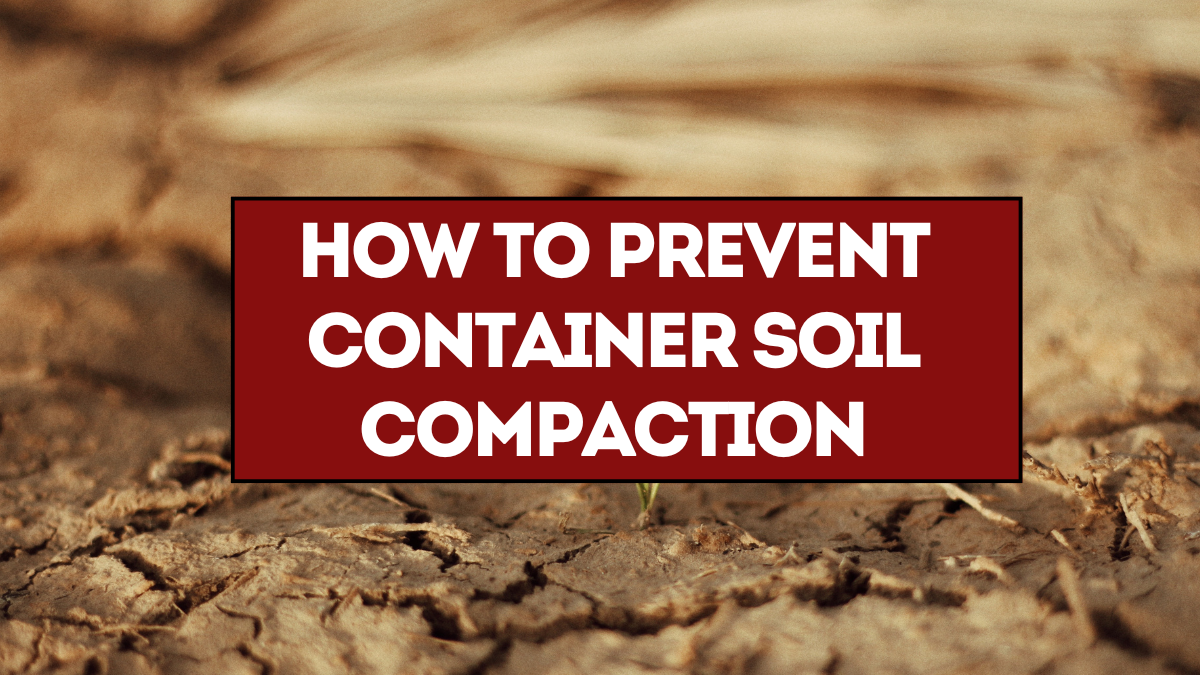Container gardening is a favorite for urban gardeners, balcony growers, and anyone who wants fresh plants in a limited space. Yet one of the biggest challenges is soil compaction. Over time, potting soil can become dense and heavy, reducing air circulation, water movement, and root growth. Compacted soil leads to poor drainage, stunted plants, and in severe cases, root rot. The good news is that you can prevent container soil compaction with a few simple techniques that keep your potting mix light, airy, and productive.
This guide explores the causes of compaction and provides seven easy fixes using materials like perlite, coco coir, mulch, and better watering practices. By applying these tips, you’ll ensure that your container plants thrive season after season.

Why Soil Compaction Happens in Containers
Unlike garden beds, pots have limited space and restricted airflow. Several factors contribute to compaction:
-
Heavy potting mixes with too much garden soil or clay content
-
Frequent watering that washes fine particles into air gaps
-
Root growth filling in the available pore spaces
-
Gravity and time, which naturally settle soil layers
The result is a dense medium with fewer air pockets, making it difficult for roots to breathe. Preventing this is essential for container success.
1. Use a Well-Draining Potting Mix
The first and most important fix is choosing the right soil from the start. Never use heavy garden soil directly in containers. Instead, opt for a high-quality potting mix designed for containers.
A good potting mix should include:
-
Peat moss or coco coir for moisture retention
-
Perlite or vermiculite for aeration
-
Compost for nutrients
-
Pine bark or rice husk to add structure
This blend ensures water drains well while retaining enough moisture for roots. Coco coir is especially useful because it resists compaction better than peat moss.
2. Add Perlite or Pumice for Aeration
To keep your potting mix fluffy, incorporate perlite or pumice. These white, lightweight volcanic minerals create permanent air pockets in soil. Unlike organic matter that breaks down over time, perlite remains stable and prevents the soil from turning into a dense block.
-
Mix about 20–30% perlite into your container soil
-
Use pumice if you prefer a heavier, long-lasting option
-
For succulents and cacti, increase aeration materials to 40–50%
This small adjustment dramatically improves drainage and root oxygen levels.
3. Incorporate Coco Coir for Moisture Balance
Coco coir is an eco-friendly alternative to peat moss and works wonders for container soil. It has a unique structure that absorbs water while keeping air spaces intact. Unlike peat, it doesn’t shrink and harden when dry, making it ideal for preventing compaction.
Benefits of coco coir:
-
Retains water but drains excess moisture
-
Resists breaking down too quickly
-
Keeps soil light and airy for years
You can buy coco coir in compressed bricks and rehydrate them before mixing with soil.
4. Water Correctly to Avoid Compaction
Overwatering is one of the main causes of soil compaction. When pots are constantly soggy, soil particles wash into air spaces, and roots struggle to get oxygen. On the other hand, letting the soil dry completely can make it hard and crusty.
Follow these watering techniques:
-
Water deeply but less frequently instead of shallow, daily watering
-
Use a watering can with a fine spout to avoid soil disturbance
-
Allow the top inch of soil to dry before watering again
-
Ensure that excess water drains from the bottom
By balancing your watering schedule, you prevent soil from collapsing into itself.
5. Mulch the Surface of Containers
Adding a layer of mulch helps maintain soil structure. Mulch prevents water from pounding directly onto the soil surface, which is a common cause of compaction. It also regulates moisture and reduces evaporation.
Good mulch options for containers include:
-
Coconut husk chips
-
Shredded bark
-
Decorative pebbles
-
Straw or dried leaves
A thin 1–2 inch layer is enough to protect the soil while still allowing water penetration.
6. Ensure Drainage Holes Are Adequate
Drainage holes are the unsung heroes of container gardening. Without proper drainage, soil becomes waterlogged and compacts quickly.
Tips for better drainage:
-
Make sure each pot has at least one large drainage hole
-
For bigger containers, 3–5 holes are ideal
-
Cover holes with mesh or broken terracotta shards to prevent clogging
-
Elevate pots slightly using pot feet or bricks to allow free water flow
If you’re reusing old containers, drill extra holes to improve drainage.
7. Refresh and Aerate Soil Regularly
Even with the best mix, container soil breaks down over time. Organic matter decomposes, roots grow dense, and air spaces shrink. To keep soil healthy:
-
Repot plants every 1–2 years into fresh soil
-
Loosen the soil surface gently with a hand fork to add air
-
Trim back thick roots during repotting to prevent overcrowding
-
Add compost and fresh perlite each season to recharge the mix
This maintenance routine ensures your plants have a healthy medium year-round.
Extra Tips for Long-Term Success
-
Avoid pressing down too firmly when filling containers—lightly tap instead
-
Choose the right pot size; too small a pot leads to quick compaction
-
Rotate crops in vegetable containers to reduce root-bound soil
-
Use self-watering containers carefully, as they may hold too much moisture
By combining good soil recipes, smart watering, and seasonal maintenance, you can prevent compaction and enjoy thriving container plants.
Why Preventing Compaction Matters
Healthy soil is the foundation of healthy plants. Preventing compaction ensures:
-
Better root growth and nutrient uptake
-
Improved water drainage and fewer root rot issues
-
Longer-lasting potting mixes that don’t need constant replacement
-
Stronger, more productive plants that look beautiful and yield more harvest
Whether you grow herbs on a windowsill, flowers on a balcony, or vegetables on a patio, taking the time to keep your potting mix airy and light will pay off in healthier growth.
FAQs
What causes soil compaction in pots?
Compaction happens due to heavy mixes, frequent watering, root crowding, and gravity settling soil over time.
Can I use garden soil in containers?
No, garden soil is too heavy and compacts quickly. Always use a potting mix with aeration materials like perlite and coco coir.
How often should I refresh potting soil?
Repot or refresh soil every 1–2 years, depending on plant type and container size.
Is coco coir better than peat moss?
Yes, coco coir resists compaction, rehydrates easily, and is more sustainable than peat moss.
Do self-watering pots prevent soil compaction?
They can help regulate moisture, but if not managed properly, they may still lead to waterlogged soil.
Click here to know more.
